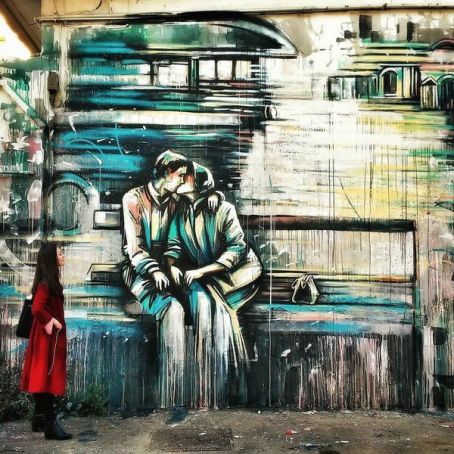Rome street art: underground comes indoors
Rome's urban art faces the perils of the street while MACRO ushers the counterculture movement inside.
By Andy Devane
"Otto!" hissed the wide-eyed little girl, chasing after her labrador through a gap in the wire fence, as if she were trespassing in Boo Radley's garden. "I told you a thousand times never to go in there," she scolded, hauling the repentant hound back through the mangled fence, under an arch, past the bins and onto Via Antonio Avogadro. Inside the wildly-overgrown enclosure lay the ruins of the Mira Lanza soap factory, abandoned for 60 years, located on the Portuense side of the Ponte della Scienza pedestrian bridge directly opposite Ostiense's landmark Gasometro.
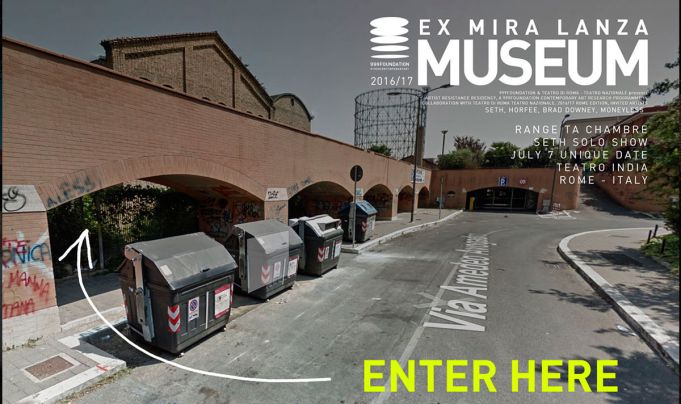
This hole in the fence marks the inauspicious entrance to a glorious art project whose official title is M.A.G.R. (Museo Abusivo Gestito dai Rom). Organised by non-profit cultural association 999Contemporary, the illicit initiative involved French street artist Seth camping and working secretly in the compound over several months in the middle of 2016. He created a series of hugely colourful murals and installations around the crumbling interior of the city-owned factory site, part of which was restored 18 years ago to house Teatro India, an avant-garde umbrella project of the Teatro di Roma.
Civil disobedience
M.A.G.R. came about after 999Contemporary director Stefano Antonelli approached Seth, offering him a residency at Teatro India within whose walls he was to incorporate his art. The Parisian artist raised the stakes, however, by proposing to work instead in the derelict section of the sprawling Mira Lanza site.
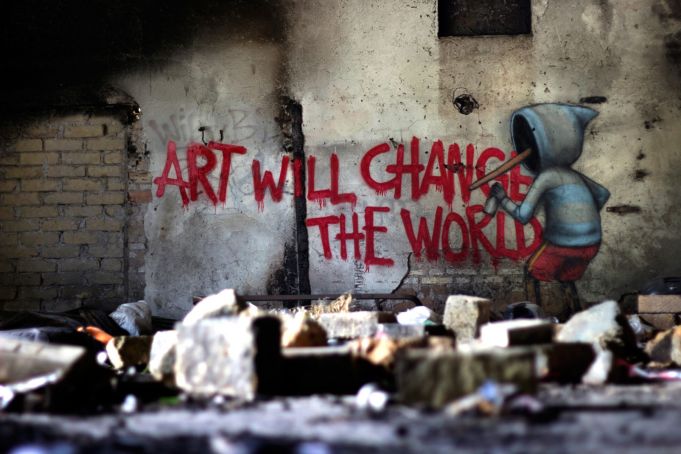
Antonelli seized upon Seth's plan of staging a civil disobedience to "devandalise and revandalise" a wasted public resource in a prime location, which – despite numerous proposals – was abandoned by successive city administrations. This alleged disregard for urban regeneration spurred the project, which involved decorating walls and pillars with spray-paint and debris found around the garbage-strewn site.
Break and enter
Ducking in under the fence, wading through the long grass, dodging broken glass and perhaps even a rat or a snake, one has a subversive sense of the “underground”, a feeling of breaking-and-entering to view Seth's clandestine beauty. The website – which warns “No Toilets. No Giftshop. No high heels. Yes Gypsies” – contains a map with an arrow directing visitors to “Break the law here”.
No ordinary installation
Many of the works have Latin titles, such as the hope-filled Lux in Tenebris (Light in Darkness), featuring a boy craning his Modigliani neck into spiralled loops of coloured halos. This particular mural was painted in an area used as a latrine by squatters until their eviction several years ago, after which the site was gutted by a fire.
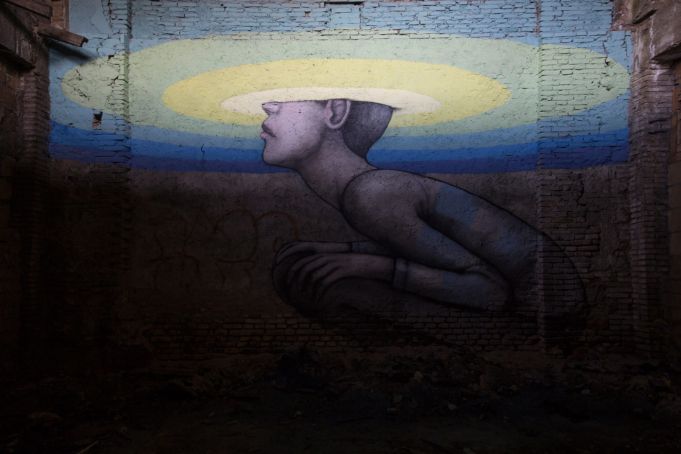
Preparing the space for Seth's work involved shovelling out heaps of human excrement, a process Antonelli described as one “not usually associated with curating a contemporary art exhibition.”
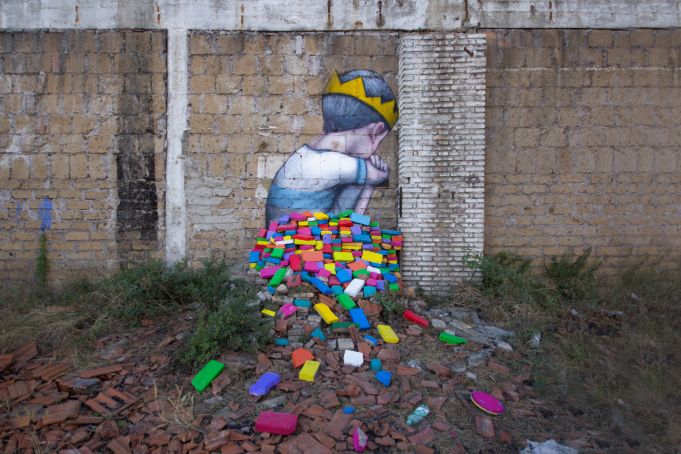
Other works include Lampedusa, a series of bricked-up windows crammed with refugees, and Macedonia, featuring found clothes pegged on barbed wire, a comment on the closed Macedonian border. Seth's Bricksit mural of a withdrawn boy wearing a crown gives the nod to Britain's ongoing Brexit negotiations, and featured on the May cover of Wanted in Rome. The remaining support pillars from the roofless factory are painted in rainbow colours, becoming Palmyre, an installation recalling the destruction by Islamic State of Syria's 2,000-year-old Temple of Bel in Palmyra.
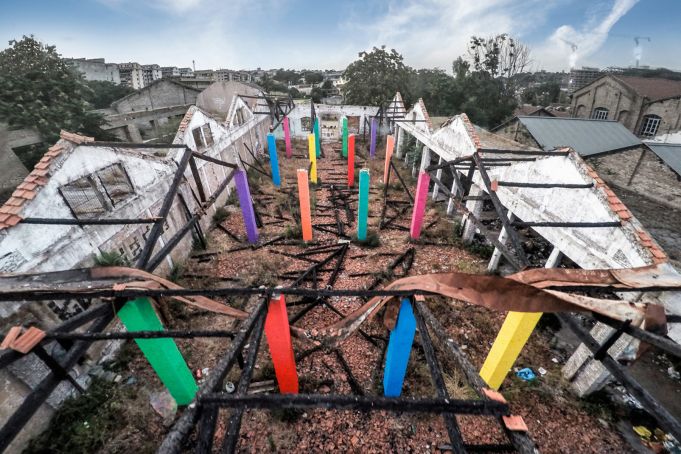
One year after its completion, Seth's project is overgrown and fading – part of the desired effect, according to Antonelli. Today the open-air museum is looked after by Tito, a member of the Roma community which now inhabits the far corner of the site. Under the honorary title of museum director, Tito is available to give tours on request.
Tor Marancia
Antonelli's organisation was also involved in Big City Life, a successful street art project whose 18 enormous murals breathed new life into the council housing tower blocks in Tor Marancia, a long-neglected suburb near EUR, in 2015.
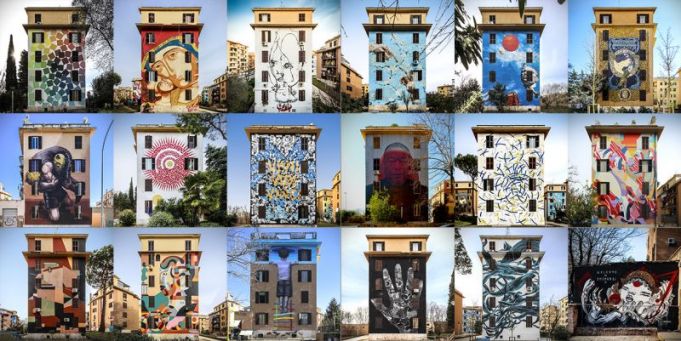
Funds raised from tours of the Museo Condominiale di Tor Marancia are channelled back into improving life for the local community, such as repairing broken walls and upgrading gardens. Antonelli reveals that a similar street art scheme is in the pipeline for the disadvantaged east Rome suburb Tor Bella Monaca.
MACRO
Cross the Streets, a multimedia exhibition whose 200 works celebrate “40 years of Street Art and Writing” is currently on show at the MACRO museum on Via Nizza. The show is curated by the founder of the international urban art publishing house Drago, Paulo Lucas von Vacano, who states: "The revolution occurs when the street enters the museum and the museum moves into the street."
Suburbs and subways
An ebullient character in trademark floppy black hat and shades, von Vacano points out that Rome is one of the European cities with the longest record of street art, particularly its suburbs and subways.
The exhibition is supported by the city, which recently announced an “historic agreement” between Rome's public transport company ATAC and the social service office for minors, requiring young “so-called writers”, charged with vandalism by the juvenile court, to clean up defaced buses and train stations.
Ozmo
The comprehensive show features the work of several senior figures in Italian street art, including Milan-based Ozmo, who is responsible for the Shelley portrait on the rail overpass in Rome's Ostiense neighbourhood. When asked if bringing an underground movement indoors risked diluting its counterculture credentials, he replied: “I believe that any phenomenon, even underground, should be developed overground, within the official culture, allowing it to stabilise and grow.”
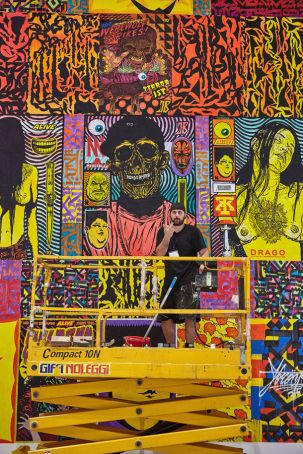
Lucamaleonte
Another important participant is Roman street artist Lucamaleonte, known for his graphic stencil creations, including the enormous site-specific pheasant motif, one of the exhibition highlights and cover of the July issue of Wanted in Rome. Lucamaleonte also took part in GRAArt, an ongoing street art project designed to cheer up the gloomy underpasses of the Grande Raccordo Anulare, with legends associated with the area around Rome's ring road.
The driving force behind the project is David "Diavù" Vecchiato, whose perspective-defying murals of pop icons adorn several public stairways around Rome. Diavù has painted a scene of the Greco-Roman mythological hero Aeneas, fresh from fleeing the flames of Troy, landing on the shores of the ancient port Lavinium. So far there are 10 murals located north, south, east and west of Rome, with plans for more, all of which can be found on a map on the project's website.

Part of the MACRO show focuses on Rome's long-lost murals by the late American artist Keith Haring, who participated in an unprecedented exhibition of New York graffiti at the capital's Palazzo delle Esposizioni in 1984. As part of the show, Haring undertook one of his mischievous murals – a cartoon creature barking at running figures – on the Via Milano side of the museum. It remained there until the visit of USSR president Michail Gorbachev in 1992 when then Rome mayor Franco Carraro had it removed. Another Haring work, painted on the transparent panels of the Flaminio-Lepanto metro bridge over the Tiber, was removed by the city in 2000, Jubilee Year, ten years after the artist's death from AIDS.
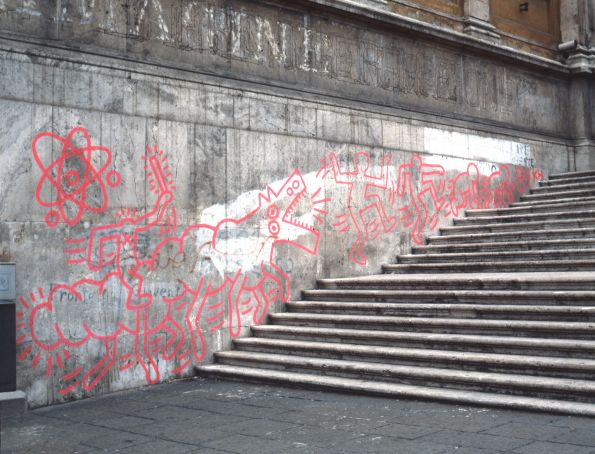
Some four kilometres from the safe confines of MACRO, the hazards of the street art trade were further illustrated by two recent events affecting two Roman artists whose work shared the same street: Via Fanfulla da Lodi in the Pigneto district. Io so i nomi, a portrayal of a balaclava-clad Pasolini by Omino 71, was defaced with a less than elegant Roman expression, while a worse fate awaited Alice Pasquini's homage to Berengo Gardin's celebrated image of lovers kissing on a bench. The wall-plaster hosting her mural was removed to make way for a marble-clad evangelical church, but thankfully not before the work was immortalised on a Wanted in Rome cover last September.
